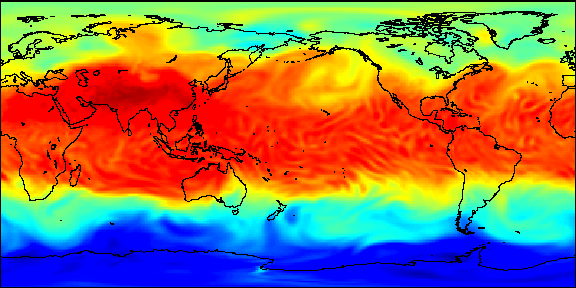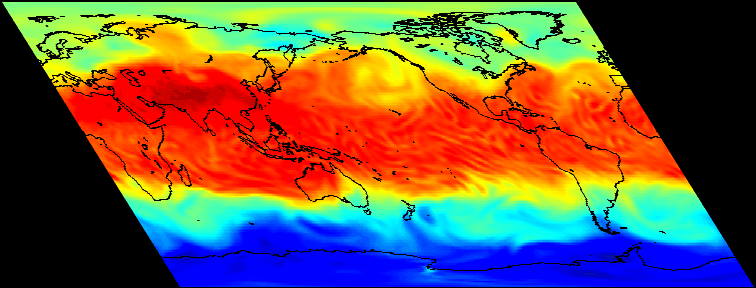PNMSHEAR
NAME
pnmshear - shear a portable anymap by some angle
SYNOPSIS
pnmshear [-noantialias] angle [pnmfile]
DESCRIPTION
Reads a portable anymap as input. Shears it by the specified angle
and produces a portable anymap as output. If the input file is in
color, the output will be too, otherwise it will be grayscale. The
angle is in degrees (floating point), and measures this:
+-------+ +-------+
| | |\ \
| OLD | | \ NEW \
| | |an\ \
+-------+ |gle+-------+
If the angle is negative, it shears the other way:
+-------+ |-an+-------+
| | |gl/ /
| OLD | |e/ NEW /
| | |/ /
+-------+ +-------+
The angle should not get too close to 90 or -90, or the resulting
anymap will be unreasonably wide.
The shearing is implemented by looping over the source pixels and
distributing fractions to each of the destination pixels. This has an
"anti-aliasing" effect - it avoids jagged edges and similar artifacts.
However, it also means that the original colors or gray levels in the
image are modified. If you need to keep precisely the same set of
colors, you can use the -noantialias flag. This does the shearing by
moving pixels without changing their values. If you want anti-
aliasing and don't care about the precise colors, but still need a
limited *number* of colors, you can run the result through ppmquant.
All flags can be abbreviated to their shortest unique prefix.
DEMONSTRATION
Let a.pnm be a portable anymap.
The following command will shear it by an angle of 32 degrees:
pnmmerge pnmshear 32 a.pnm > ashear.pnm
BEFORE

AFTER

SEE ALSO
pnmrotate(1), pnmflip(1), pnm(5), ppmquant(1)
AUTHOR
Copyright (C) 1989, 1991 by Jef Poskanzer.
